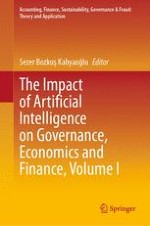The book discusses the effects of artificial intelligence in terms of economics and finance. In particular, the book focuses on the effects of the change in the structure of financial markets, institutions and central banks, along with digitalization analyzed based on fintech ecosystems. In addition to finance sectors, other sectors, such as health, logistics, and industry 4.0, all of which are undergoing an artificial intelligence induced rapid transformation, are addressed in this book.
Readers will receive an understanding of an integrated approach towards the use of artificial intelligence across various industries and disciplines with a vision to address the strategic issues and priorities in the dynamic business environment in order to facilitate decision-making processes. Economists, board members of central banks, bankers, financial analysts, regulatory authorities, accounting and finance professionals, chief executive officers, chief audit officers and chief financial officers, chief financial officers, as well as business and management academic researchers, will benefit from reading this book.
